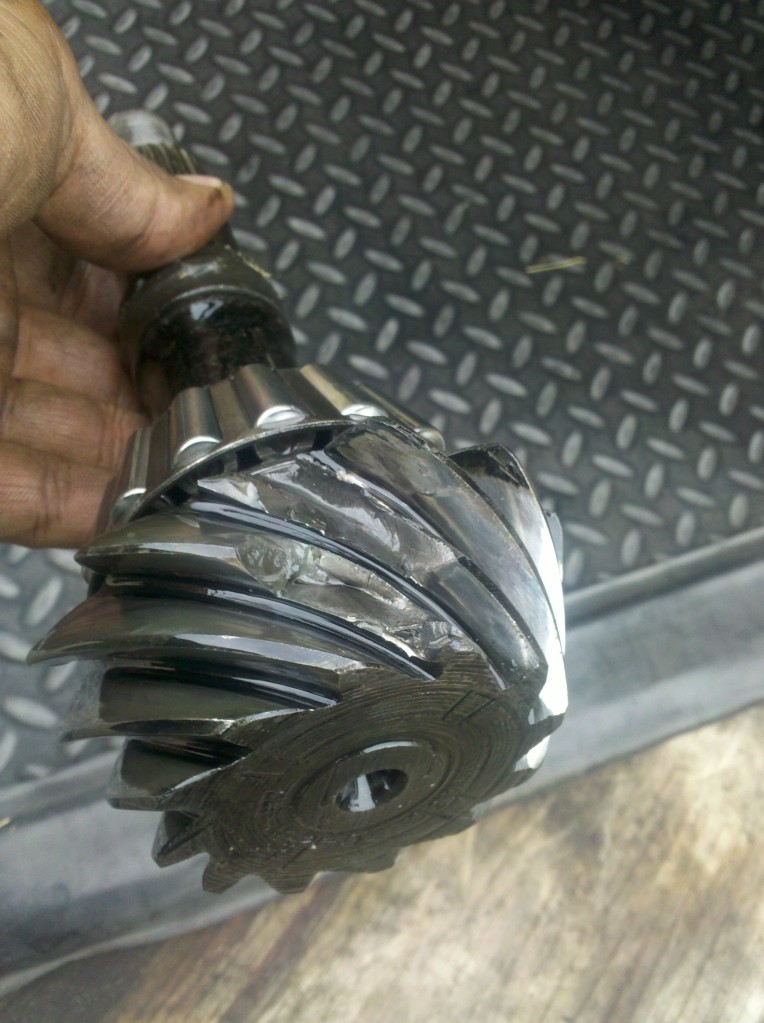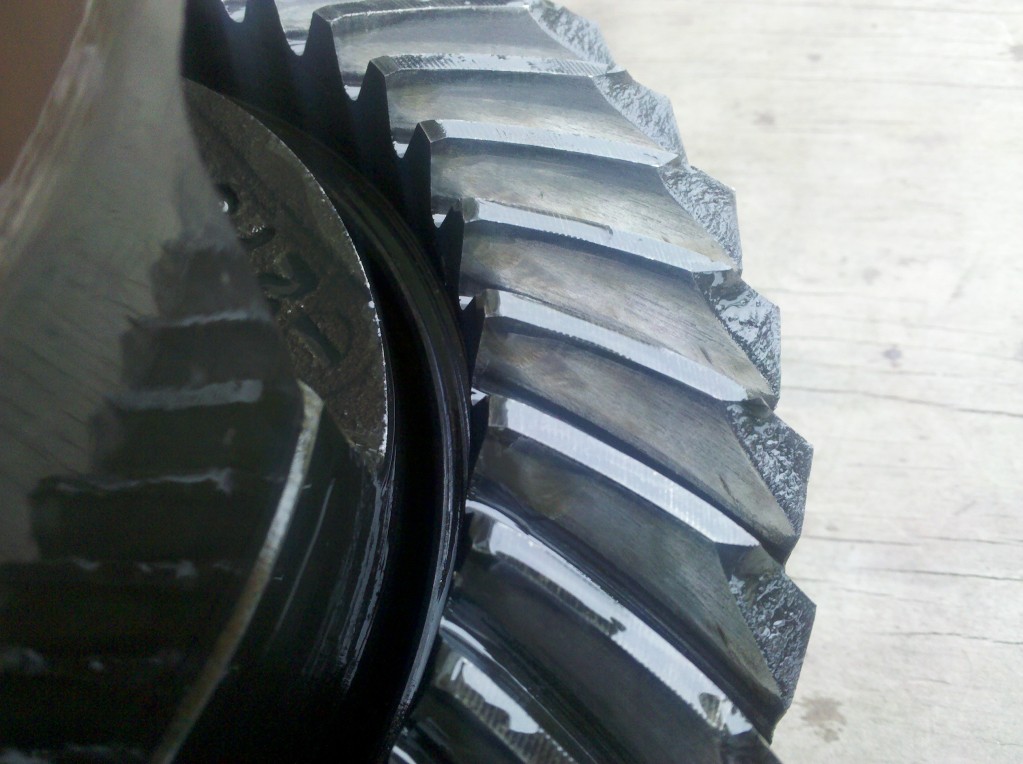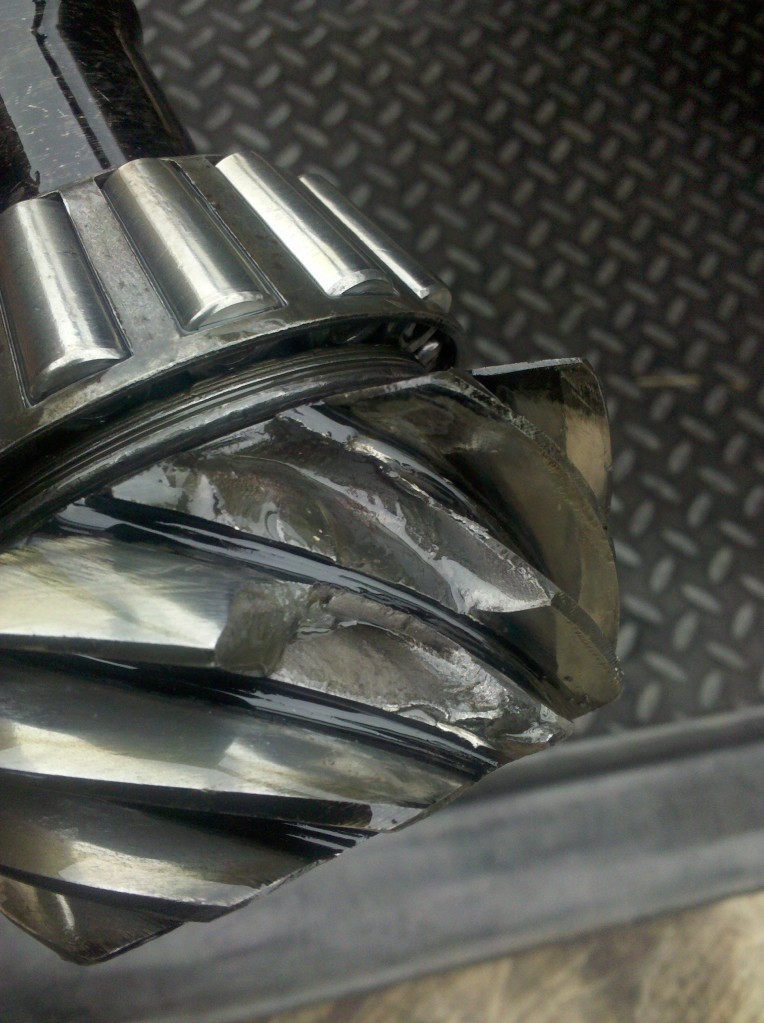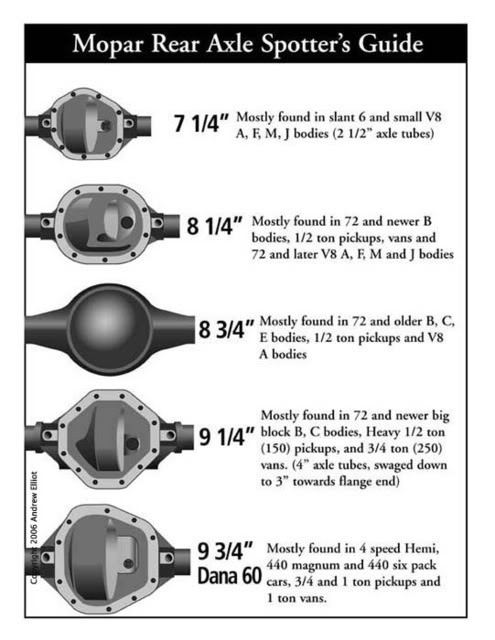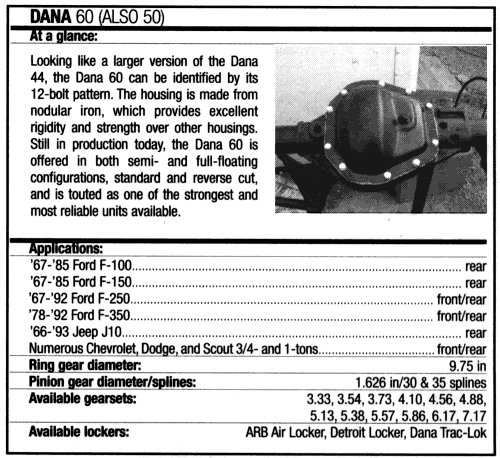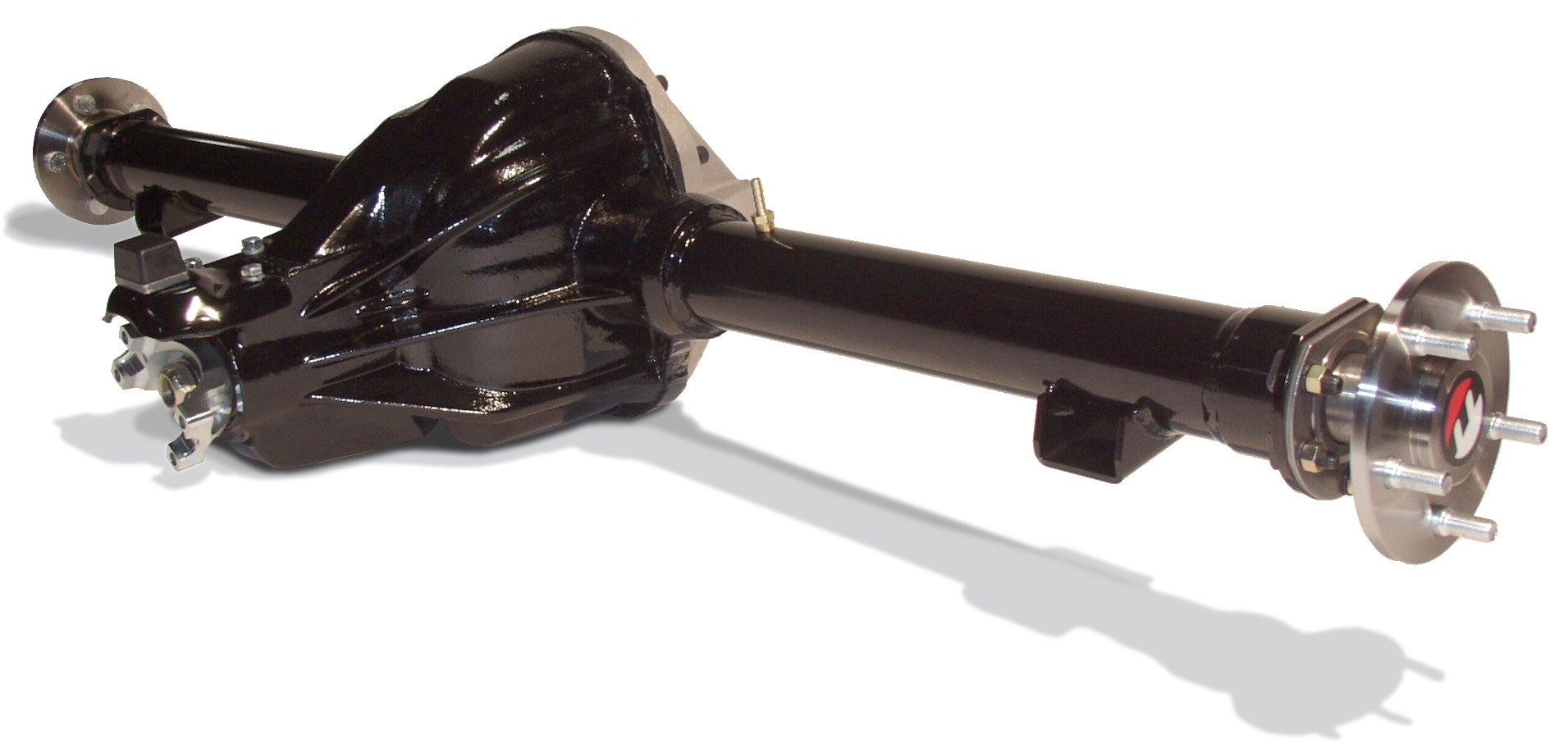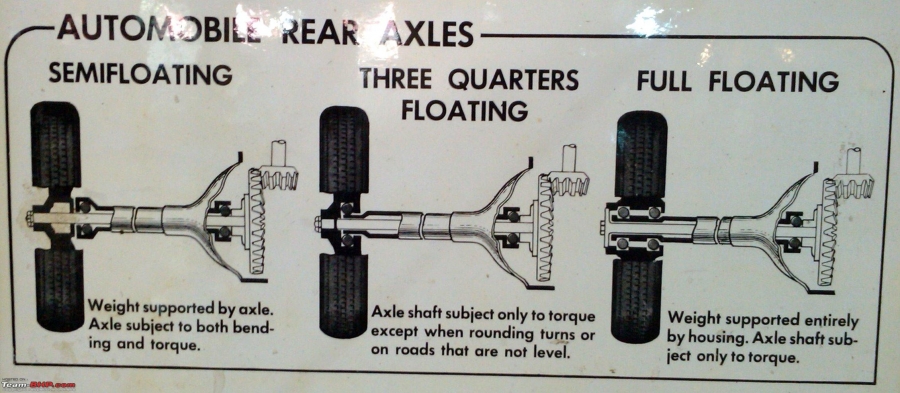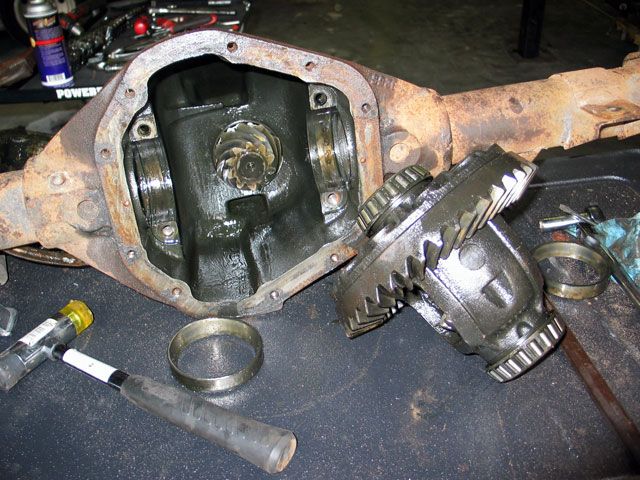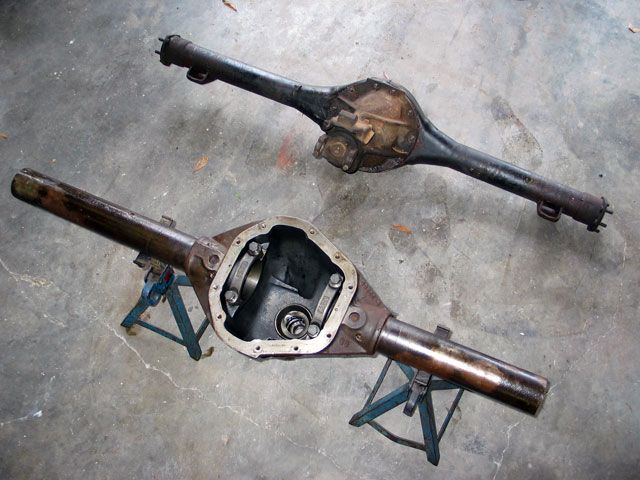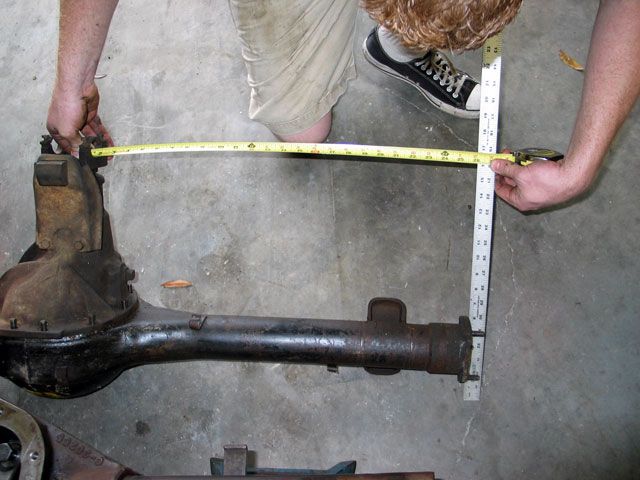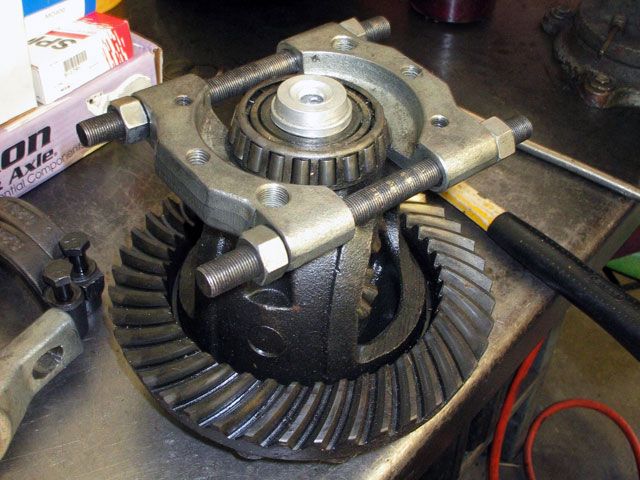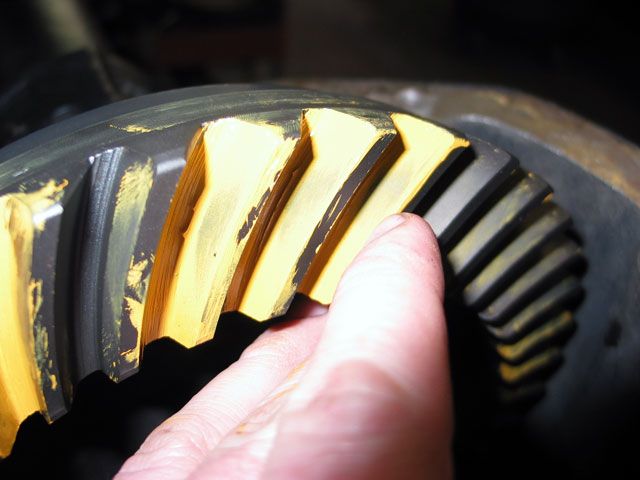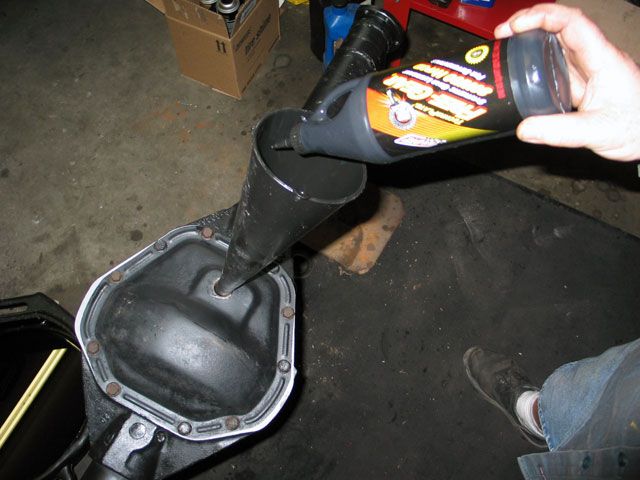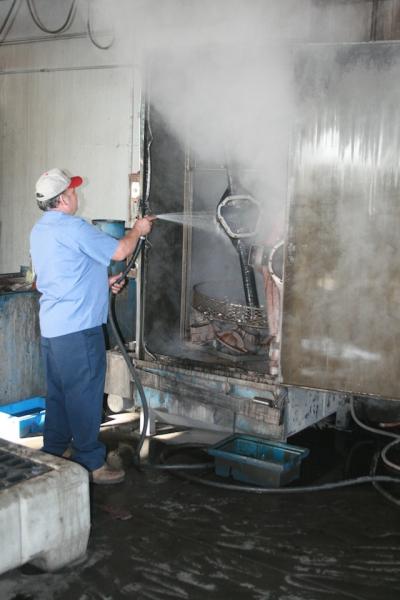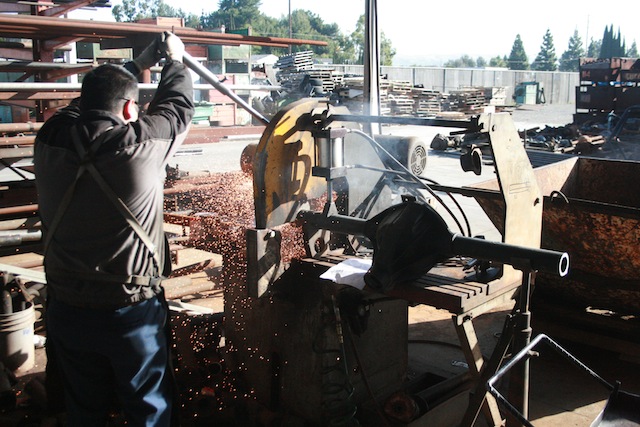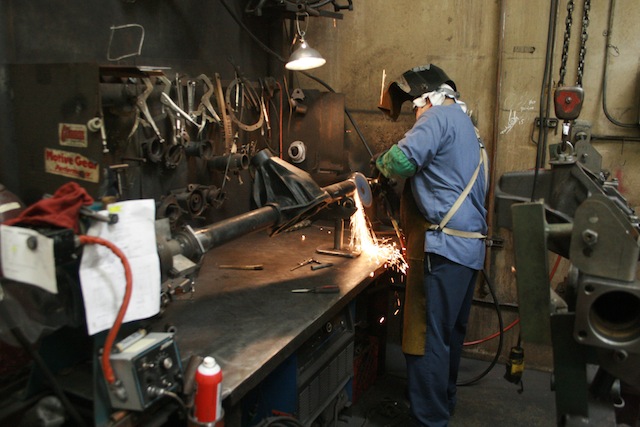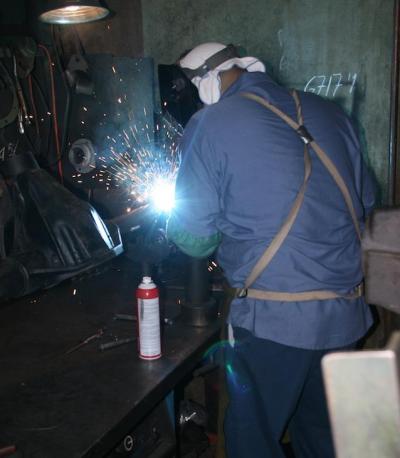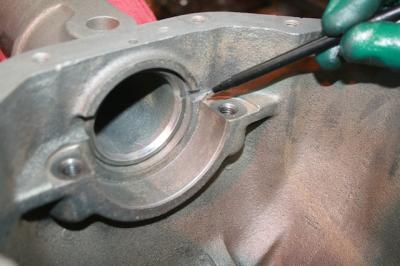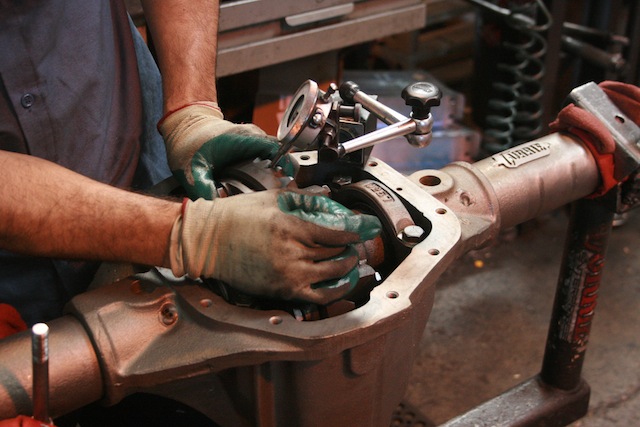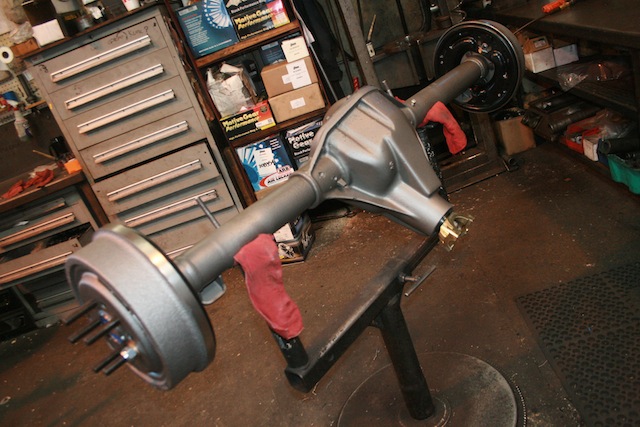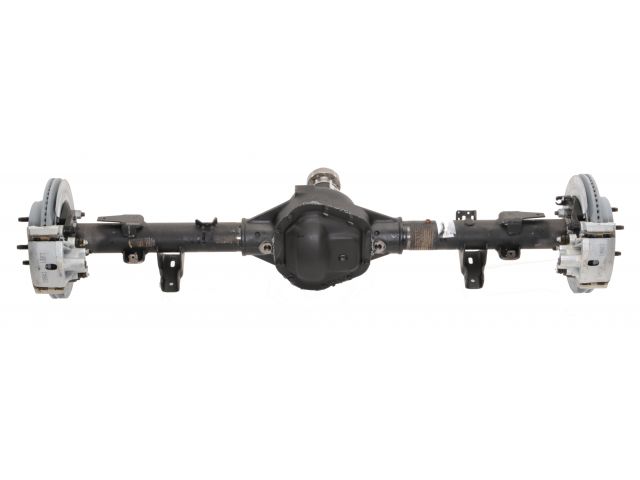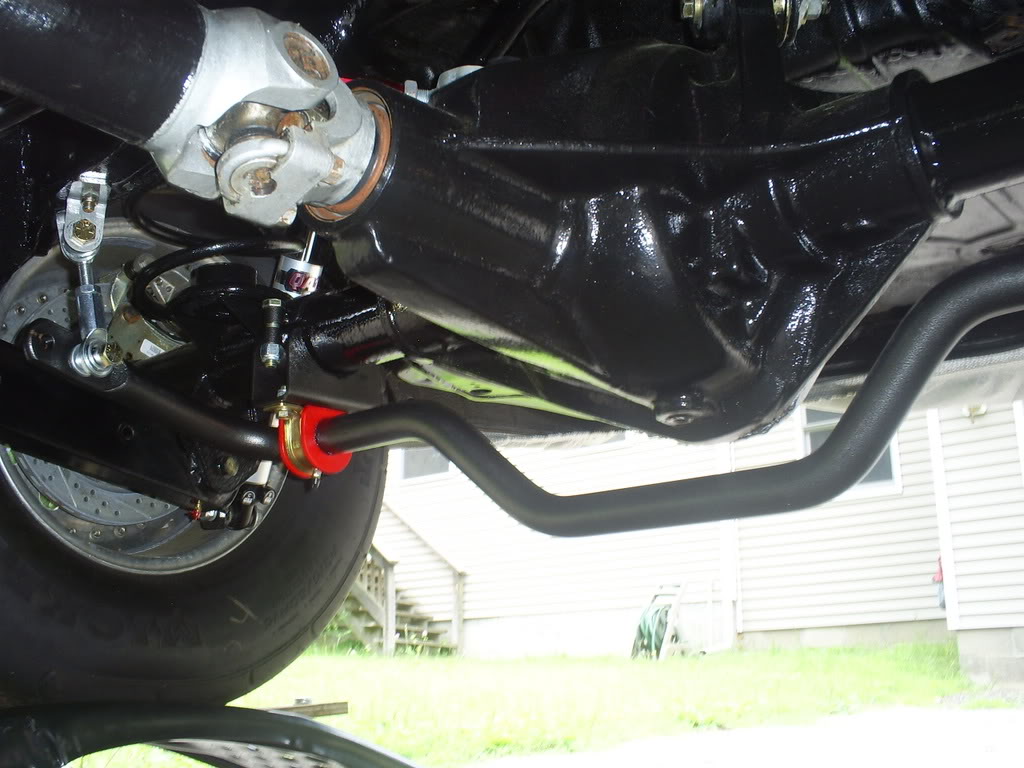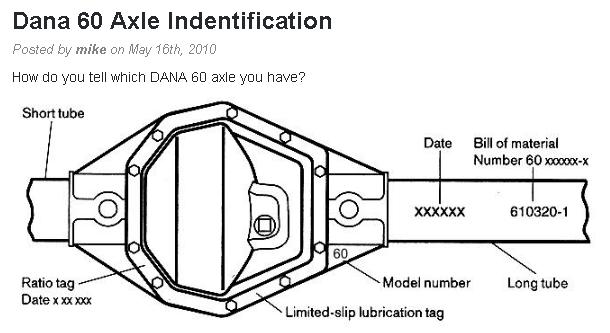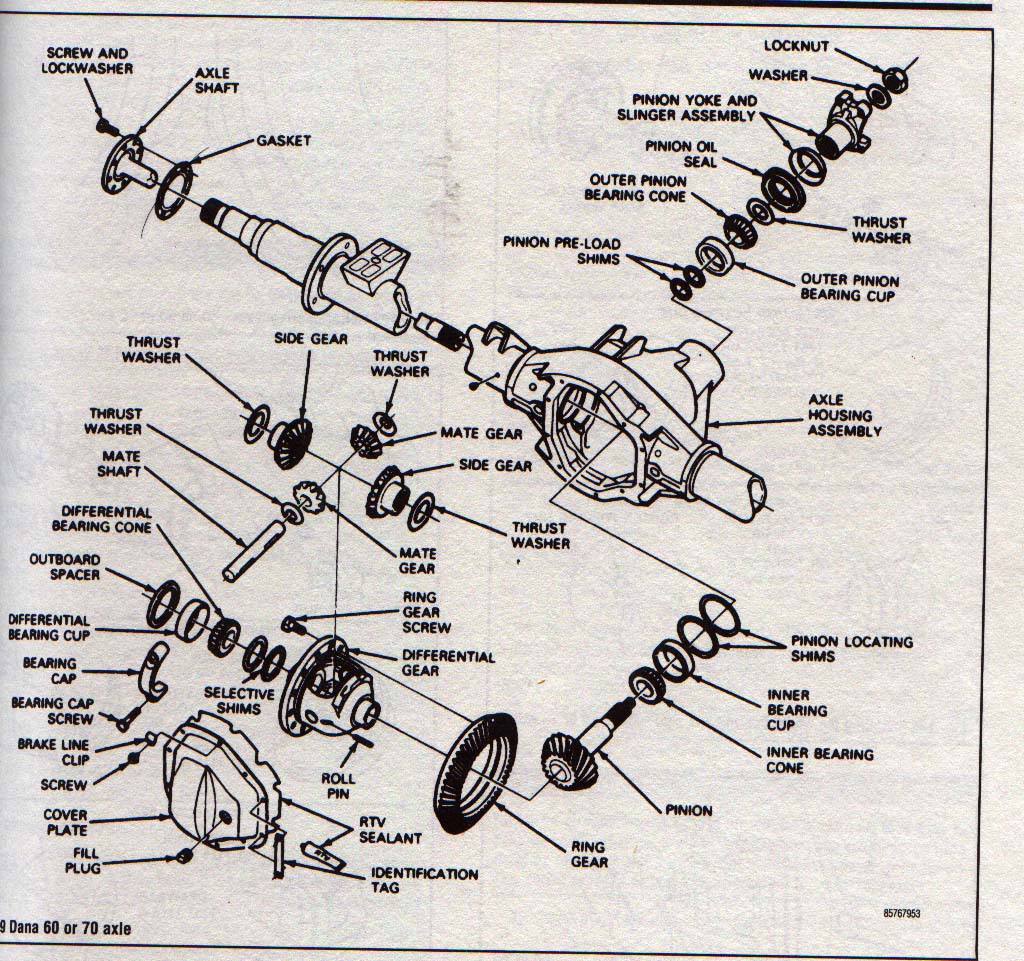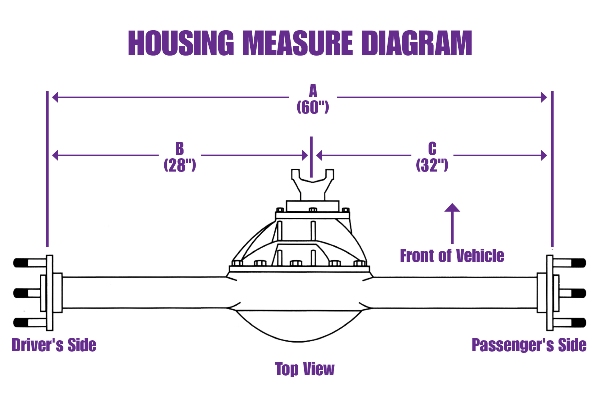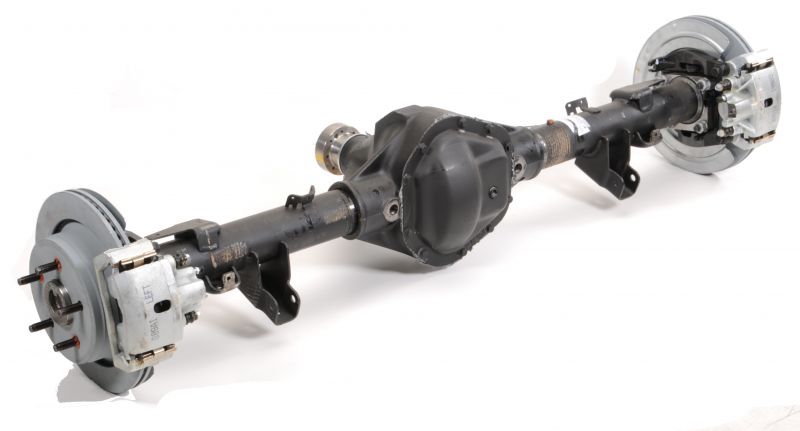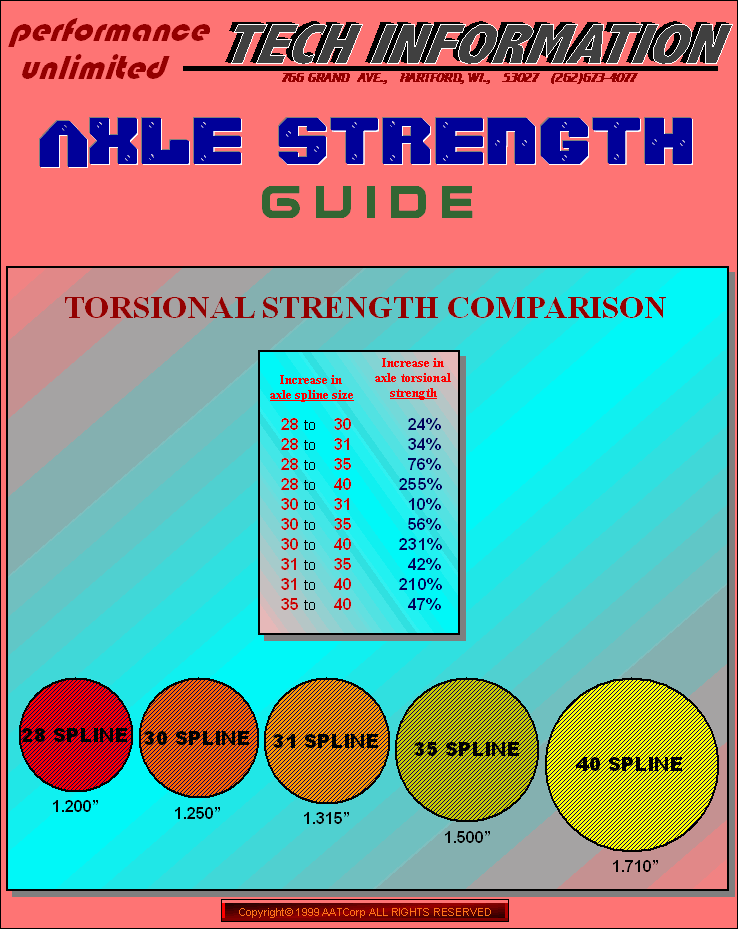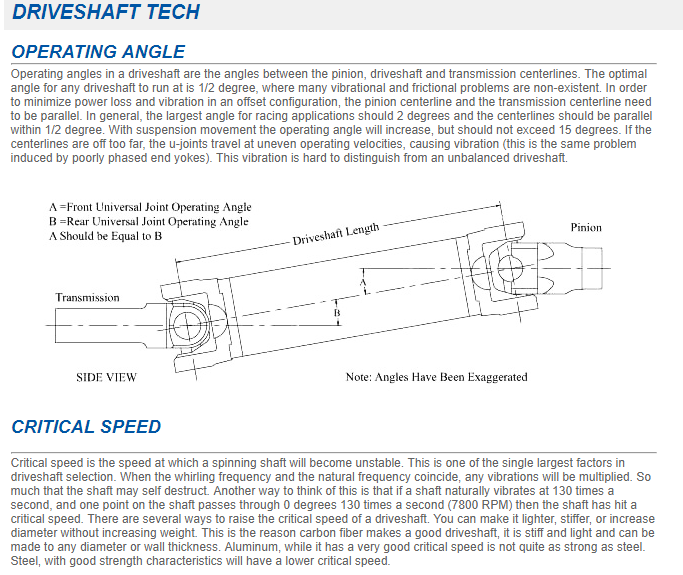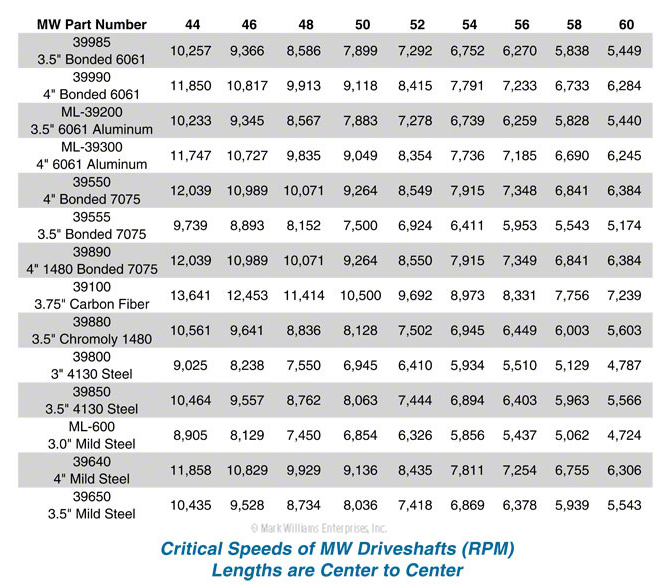IVE used ford 9", Chevy 12 bolt, 10 bolt Pontiac rears and several others ( EVENTUALLY COMPONENTS OF EACH WERE TWISTED INTO SCRAP IN MOST CASES),now I'll admit I have limited experience with the ,smaller imports and z cars , having only helped on a few , maybe a dozen v8 conversions and generally build big block muscle cars , like GTO, chevelles, camaros, novas , firebirds,corvettes, and street rods like t-buckets and vegas with big block engines, but Ive certainly shredded my share of 10 bolt, and 12 bolt chevy and a few 9" ford differentials in the process and learned what parts hold up as a result. I'm a firm believer in the use of the DANA 60 , as it is without doubt the TOUGHEST of the bunch and the strongest rear differential IVE used, IVE NEVER MANAGED TO HURT ONE YET!
heres the main point I worry about, in a differential, its durability once you install a serious engine, and its the fact that I,ve shredded several 12 bolt rear differentials in the past in camaros, chevelles and similar cars and when you break a stock 12 bolt rear axle the wheels come off the car.
the hot ticket was supposed to be a 9" ford with aftermarket axles, but Ive busted those also.
Ive used dana 60 rear differentials in most of my serious race car builds and have never yet hurt one even with a 750 hp/700 ft lbs torque nitrous big block running slicks
Id also point out that a 12 bolt rear differential will need aftermarket axles and C-clip eliminators to be safe with the use of slicks and high torque load launches.
if you have a car with a G.M. rear the FORD 9" is a popular upgrade but I much prefer the DANA 60
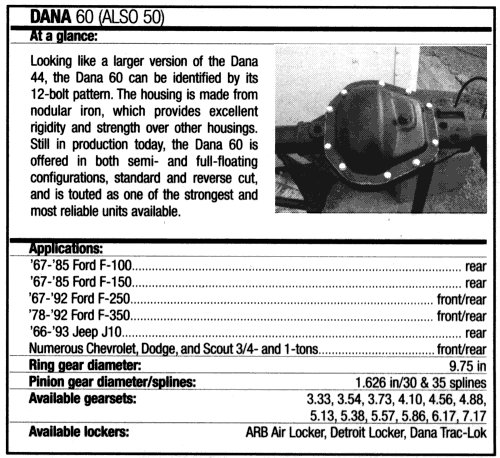
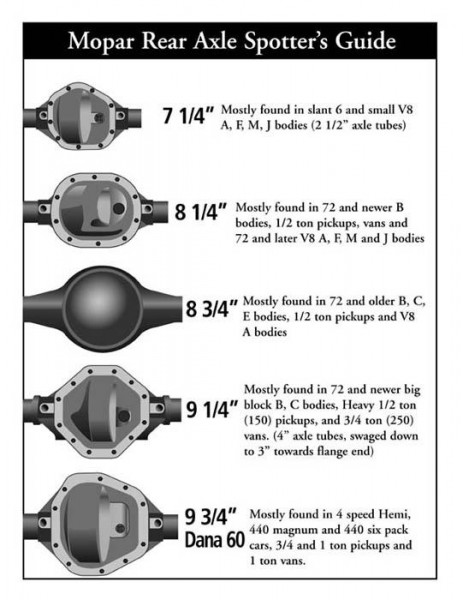
Ive shredded, and destroyed, several stock and 12 bolt differentials modified with aftermarket axles with a few big block engines Ive built so I generally advise use of a DANA 60 based rear differential, as Ive yet to break a properly set up DANA 60 and Ive had 750 hp cars beating on them for several seasons racing.
IF you some how manage to snap a dana 60 axle the car coasts to a stop with no engine power reaching the rear tires, do that same ,snap an axle trick with a stock 12 bolt G.M. differential and the axle and tire comes out of the differential while your driving , which can be a huge problem
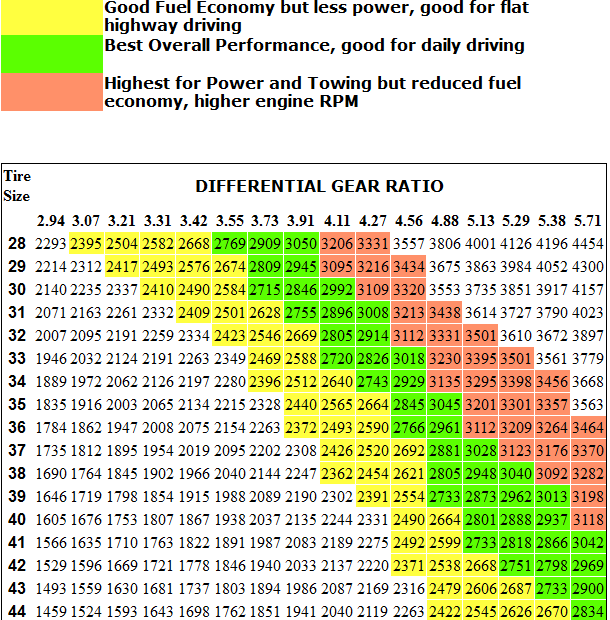
http://www.markwilliams.com/bulletproof.aspx
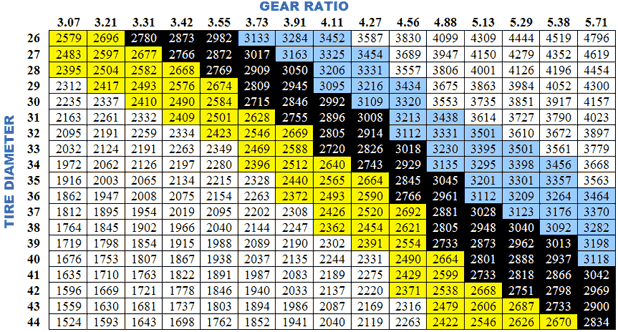
http://www.moserengineering.com/moser-60-musclepak-muscle-pak-pack-dana.item
http://www.hotrod.com/techarticles/driv ... l_install/
http://www.carcraft.com/techarticles/11 ... ewall.html
http://www.taylor-race.com/pdf/understa ... ntials.pdf
http://www.strangeengineering.net/websi ... stallation
http://www.rogueengineering.com/bmw/DIFF.html
http://www.carcraft.com/techarticles/cc ... ewall.html
http://www.streetperformance.com/index.html?catid=2460
http://www.billavista.com/tech/Articles/Dana_60_Front_Axle_Bible/
http://static.summitracing.com/global/i ... 890633.pdf
http://www.raceindustry.com/index.html?catid=2460
http://www.bing.com/videos/search?q=rac ... 9243EF6FCC
http://www.strangeengineering.net/high-performance-street/complete-rear-end-assemblies/s60.html
http://www2.dana.com/pdf/XGI.pdf
http://www.strangeengineering.net/
http://www.circletrack.com/drivetrainte ... _delivery/
http://www.chevyhiperformance.com/techa ... omparison/
http://www.crawlpedia.com/thick_gears.htm
http://www.strangeengineering.net/catal ... ?q=dana+60
http://www.strangeengineering.net/gm-12 ... spool.html
http://www.strangeengineering.net/catal ... olt+c-clip
http://www.strangeengineering.net/catal ... ++complete
http://www.strangeengineering.net/high- ... nents.html
http://www.rsgear.com/articles/1996_08.pdf

READ THRU THE LINKED INFO
http://www.carcraft.com/techarticles/cc ... to_01.html
http://www.carcraft.com/techarticles/cc ... ewall.html
https://en.wikipedia.org/wiki/Dana_60
viewtopic.php?f=71&t=1934&p=5126#p5126
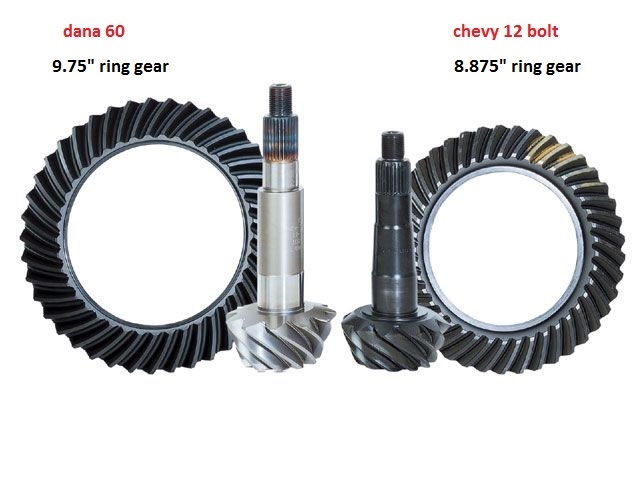
notice the extended pinion support on the ford pinion gear

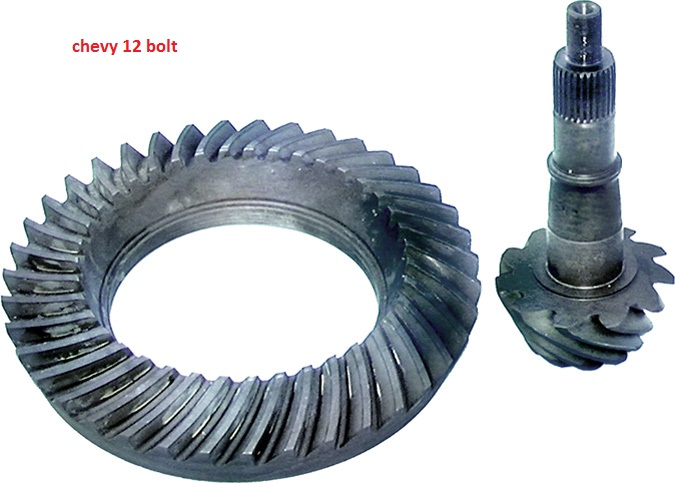
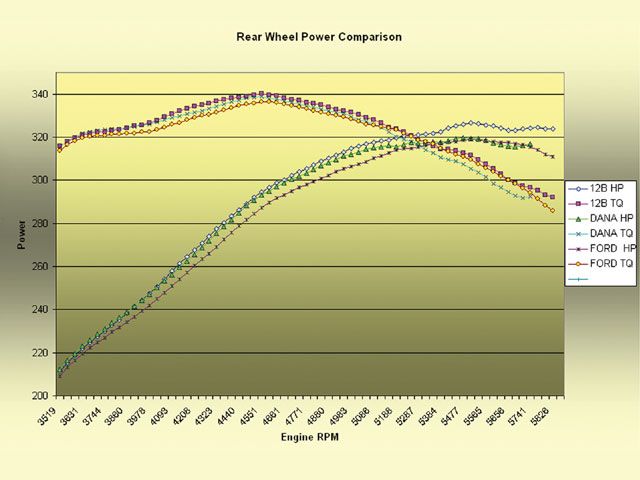
BTW just like on an engine installing a STRONG MAGNET near a lubricant drain plug on a differential too trap metallic debris from gear ear tends to increase durability
If your looking in salvage yards for a dana 60 rear differential, the forward housing, on performance car versions has 5 lug axles,it has provisions to bolt on a snubber on the car versions thats missing on the truck versions and the
u-joint, yoke or hub used on trucks doesn,t interchange with the car version
some truck versions use different axles
there are 6 lug and full float versions in trucks and a very similar looking dana 70
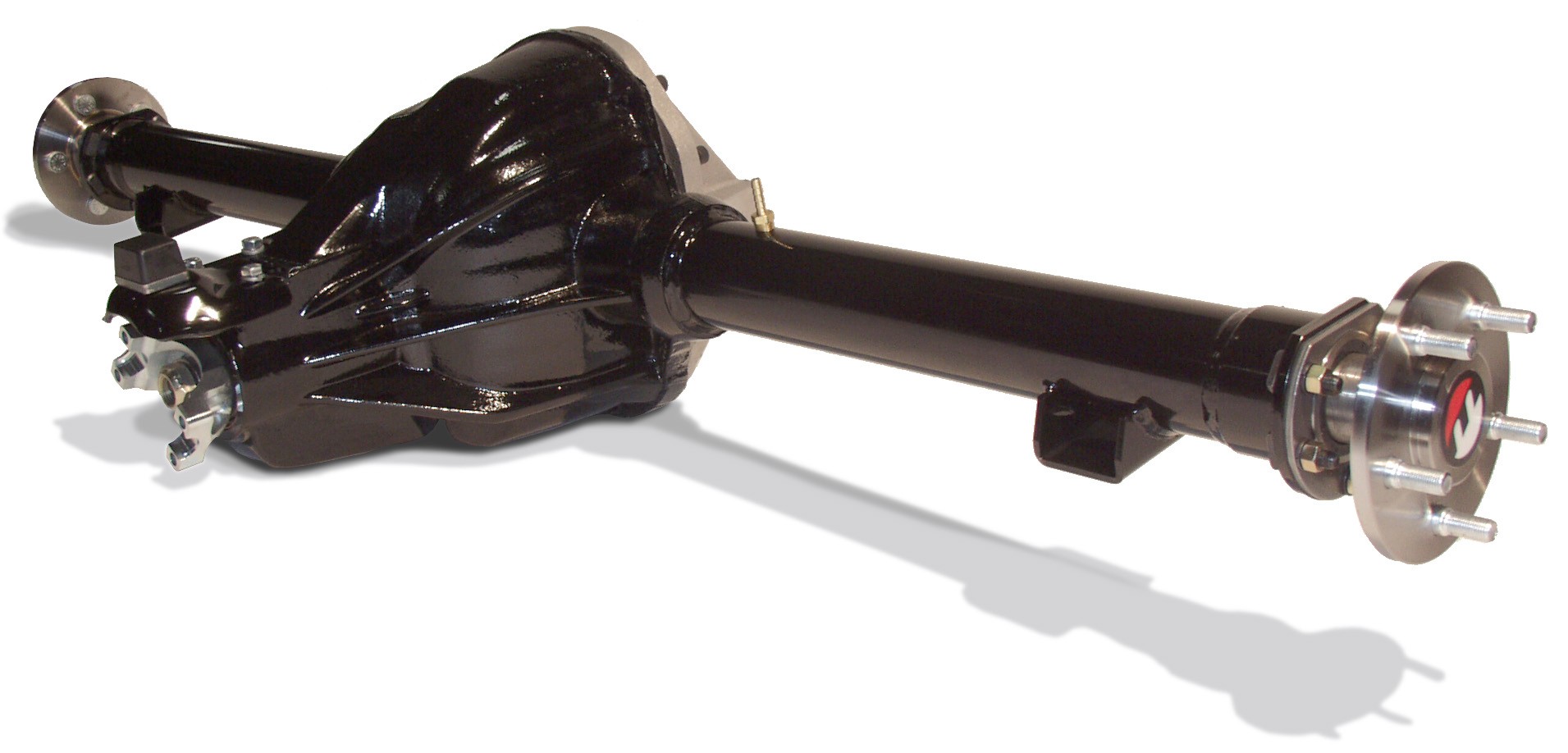
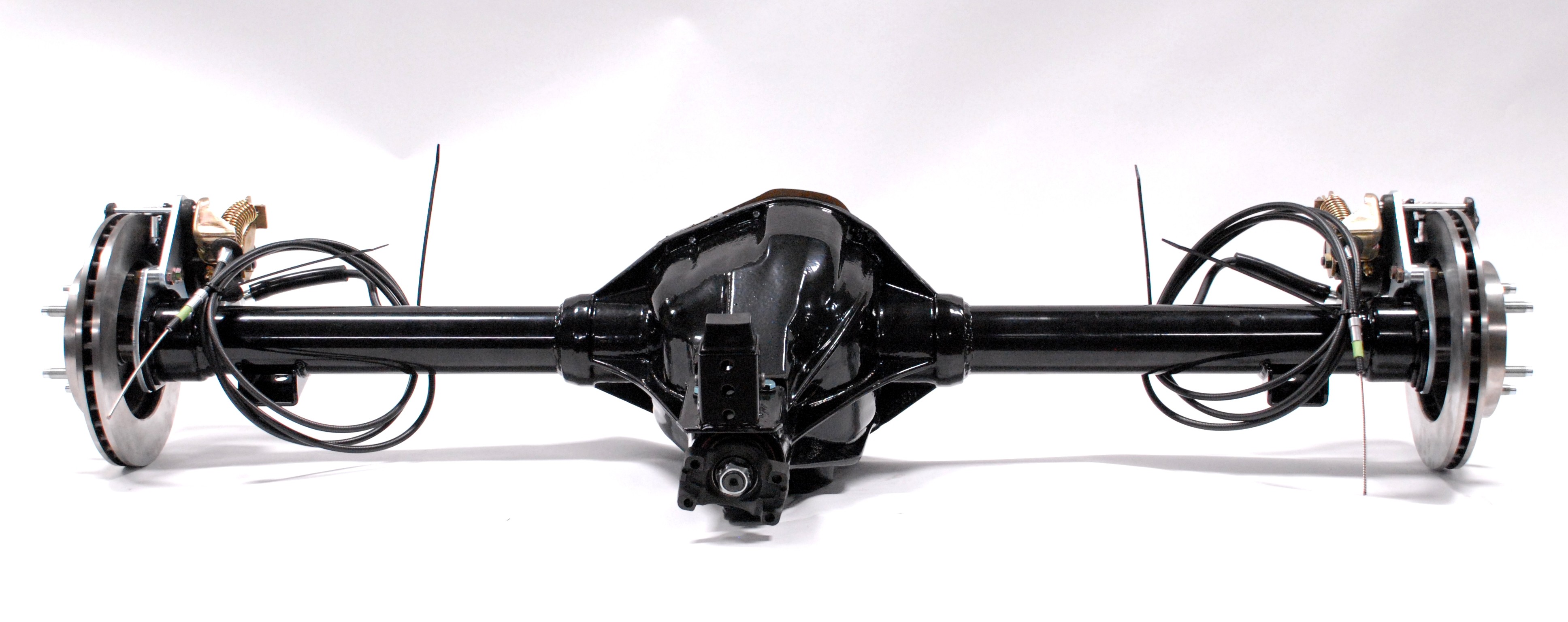
dana 60 vs 12 bolt chevy
http://www.hemmings.com/mus/stories/200 ... ure27.html
http://www.drivetrain.com/parts_catalog ... parts.html
viewtopic.php?f=71&t=4810
http://en.wikipedia.org/wiki/Dana_60
http://www.moparmusclemagazine.com/tech ... index.html
http://www.currieenterprises.com/cestor ... rends.aspx
http://www.autohobbydigest.com/dana.html
viewtopic.php?f=71&t=10690&p=46305#p46305
http://www.spohn.net/shop/1982-1992-GM- ... plete.html
http://www.carcraft.com/techarticles/cc ... to_01.html
http://broncograveyard.com/bronco/c-244 ... 0_rear.htm
http://broncograveyard.com/bronco/b-495 ... ana_60.htm
viewtopic.php?f=71&t=555
http://www.diffgears.com/shop/dana-60
http://www.moserengineering.com/Pages/D ... etrac.html
http://www.cachassisworks.com/CatPages/CAC/CAC0204.pdf
BTW banjo fittings require a seal washer on both sides
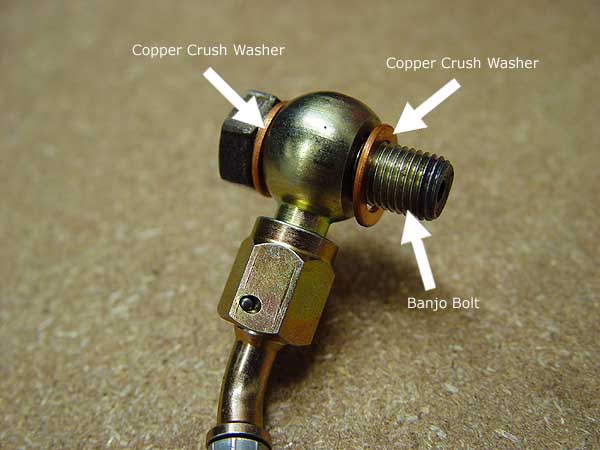
keep in mind , when your fabricating a rear differential that a good custom shop has little problem producing axles that fit custom bearing sizes and lengths, or can center the differential with different than stock axle lengths ,theres no reason that lets say the axle tubes on the dana rear can,t be cut shorter and have ford outer bearings and flanges welded on and ford brakes and a chevy lug bolt pattern fabricated, you need to discus your options not just assume everything remains constant or single brand consistent
Popular Axle Carrier Breaks
Axle Low Carrier High Carrier
AAM 9.25" All / No Break Same
AAM 9.25" IFS All / No Break Same
AAM 10.5" All / No Break Same
AAM 11.5" All / No Break Same
AMC Model 20 2.73 & Down 3.08 & Up
AMC Model 35 3.31 & Down 3.54 & Up
Chrysler 7.25" 2.47 & Down 2.76 & Up
Chrysler 8.25" 2.47 & Down 2.76 & Up
Chrysler 8.75" (All) All / No Break Same
Chrysler 9.25" All / No Break Same
Chrysler 10.5" All / No Break Same
Chrysler 11.5" All / No Break Same
Dana 27 3.73 & Down 3.92 & Up
Dana 30 3.54 & Down 3.73 & Up
Dana 35 3.31 & Down 3.54 & Up
Dana 36 ICA 2.73 & Down 3.07 & Up
Dana 44 3.73 & Down 3.92 & Up
Dana 50 All / No Break Same
Dana 60 4.10 & Down 4.56 & Up
Dana 61 All / No Break Same
Dana 70 4.10 & Down 4.56 & Up
Dana 80 3.73 & Down 4.10 & Up
Ford 7.5" All / No Break Same
Ford 8" All / No Break Same
Ford 8.8" All / No Break Same
Ford 9 Inch All / No Break Same
Ford 9.75" All / No Break Same
Ford 10.25" / 10.5" All / No Break Same
Axle Low Carrier High Carrier
GM 7.2" IFS 3.08 & Down 3.42 & Up
GM 7.5" / 7.6" 3.08 & Down 3.23 & Up
GM 8.0" 3.08 & Down 3.31 & Up
GM 8.2" 2.76 & Down 3.07 & Up
GM 8.2" BOP 2.76 & Down / 2.94 to 3.23 / 3.31 & Up
GM 8.25" IFS All / No Break Same
GM 8.5" / 8.6" 2.56 & Down 2.73 & Up
GM 9.25" IFS All / No Break Same
GM 9.5" All / No Break Same
GM 10.5" 14 Bolt 4.10 & Down 4.56 & Up
GM 11.5" All / No Break Same
GM 55P / 55T All / No Break Same
GM 12 Bolt Car 2.76 & Down / 3.07 to 3.90 / 4.10 & Up
GM 12 Bolt Truck 2.73 & Down / 2.76 to 3.42 / 3.73 & Up
Suzuki Samurai All / No Break Same
Toyota 7.5" All / No Break Same
Toyota 8" (4Cyl) All / No Break Same
Toyota 8" TV6 All / No Break Same
Toyota T100 All / No Break Same
Toyota 9.5" All / No Break Same
Toyota 10.5" All / No Break Same
Land Cruiser 8" All / No Break Same
Land Cruiser 9.5" All / No Break Same
Axle Carrier Break data is ©Copyright Crawlpedia.com - Please provide a link back to this page when copying.
Data is accurate to the best of our knowledge through 2013 and is offered as-is with no guarantee.
Other Ring and Pinion Gear Resources
Gear Ratio Finder
Gear Ratio Calculator
Ring and Pinion Setup Specs
Shop: Yukon Ring and Pinion Gears
heres the main point I worry about, in a differential, its durability once you install a serious engine, and its the fact that I,ve shredded several 12 bolt rear differentials in the past in camaros, chevelles and similar cars and when you break a stock 12 bolt rear axle the wheels come off the car.
the hot ticket was supposed to be a 9" ford with aftermarket axles, but Ive busted those also.
Ive used dana 60 rear differentials in most of my serious race car builds and have never yet hurt one even with a 750 hp/700 ft lbs torque nitrous big block running slicks
Id also point out that a 12 bolt rear differential will need aftermarket axles and C-clip eliminators to be safe with the use of slicks and high torque load launches.
if you have a car with a G.M. rear the FORD 9" is a popular upgrade but I much prefer the DANA 60


Ive shredded, and destroyed, several stock and 12 bolt differentials modified with aftermarket axles with a few big block engines Ive built so I generally advise use of a DANA 60 based rear differential, as Ive yet to break a properly set up DANA 60 and Ive had 750 hp cars beating on them for several seasons racing.
IF you some how manage to snap a dana 60 axle the car coasts to a stop with no engine power reaching the rear tires, do that same ,snap an axle trick with a stock 12 bolt G.M. differential and the axle and tire comes out of the differential while your driving , which can be a huge problem

http://www.markwilliams.com/bulletproof.aspx

http://www.moserengineering.com/moser-60-musclepak-muscle-pak-pack-dana.item
http://www.hotrod.com/techarticles/driv ... l_install/
http://www.carcraft.com/techarticles/11 ... ewall.html
http://www.taylor-race.com/pdf/understa ... ntials.pdf
http://www.strangeengineering.net/websi ... stallation
http://www.rogueengineering.com/bmw/DIFF.html
http://www.carcraft.com/techarticles/cc ... ewall.html
http://www.streetperformance.com/index.html?catid=2460
http://www.billavista.com/tech/Articles/Dana_60_Front_Axle_Bible/
http://static.summitracing.com/global/i ... 890633.pdf
http://www.raceindustry.com/index.html?catid=2460
http://www.bing.com/videos/search?q=rac ... 9243EF6FCC
http://www.strangeengineering.net/high-performance-street/complete-rear-end-assemblies/s60.html
http://www2.dana.com/pdf/XGI.pdf
http://www.strangeengineering.net/
http://www.circletrack.com/drivetrainte ... _delivery/
http://www.chevyhiperformance.com/techa ... omparison/
http://www.crawlpedia.com/thick_gears.htm
http://www.strangeengineering.net/catal ... ?q=dana+60
http://www.strangeengineering.net/gm-12 ... spool.html
http://www.strangeengineering.net/catal ... olt+c-clip
http://www.strangeengineering.net/catal ... ++complete
http://www.strangeengineering.net/high- ... nents.html
http://www.rsgear.com/articles/1996_08.pdf

READ THRU THE LINKED INFO
http://www.carcraft.com/techarticles/cc ... to_01.html
http://www.carcraft.com/techarticles/cc ... ewall.html
https://en.wikipedia.org/wiki/Dana_60
viewtopic.php?f=71&t=1934&p=5126#p5126

notice the extended pinion support on the ford pinion gear



BTW just like on an engine installing a STRONG MAGNET near a lubricant drain plug on a differential too trap metallic debris from gear ear tends to increase durability
If your looking in salvage yards for a dana 60 rear differential, the forward housing, on performance car versions has 5 lug axles,it has provisions to bolt on a snubber on the car versions thats missing on the truck versions and the
u-joint, yoke or hub used on trucks doesn,t interchange with the car version
some truck versions use different axles
there are 6 lug and full float versions in trucks and a very similar looking dana 70


dana 60 vs 12 bolt chevy
http://www.hemmings.com/mus/stories/200 ... ure27.html
http://www.drivetrain.com/parts_catalog ... parts.html
viewtopic.php?f=71&t=4810
http://en.wikipedia.org/wiki/Dana_60
http://www.moparmusclemagazine.com/tech ... index.html
http://www.currieenterprises.com/cestor ... rends.aspx
http://www.autohobbydigest.com/dana.html
viewtopic.php?f=71&t=10690&p=46305#p46305
http://www.spohn.net/shop/1982-1992-GM- ... plete.html
http://www.carcraft.com/techarticles/cc ... to_01.html
http://broncograveyard.com/bronco/c-244 ... 0_rear.htm
http://broncograveyard.com/bronco/b-495 ... ana_60.htm
viewtopic.php?f=71&t=555
http://www.diffgears.com/shop/dana-60
http://www.moserengineering.com/Pages/D ... etrac.html
http://www.cachassisworks.com/CatPages/CAC/CAC0204.pdf
BTW banjo fittings require a seal washer on both sides

keep in mind , when your fabricating a rear differential that a good custom shop has little problem producing axles that fit custom bearing sizes and lengths, or can center the differential with different than stock axle lengths ,theres no reason that lets say the axle tubes on the dana rear can,t be cut shorter and have ford outer bearings and flanges welded on and ford brakes and a chevy lug bolt pattern fabricated, you need to discus your options not just assume everything remains constant or single brand consistent
Popular Axle Carrier Breaks
Axle Low Carrier High Carrier
AAM 9.25" All / No Break Same
AAM 9.25" IFS All / No Break Same
AAM 10.5" All / No Break Same
AAM 11.5" All / No Break Same
AMC Model 20 2.73 & Down 3.08 & Up
AMC Model 35 3.31 & Down 3.54 & Up
Chrysler 7.25" 2.47 & Down 2.76 & Up
Chrysler 8.25" 2.47 & Down 2.76 & Up
Chrysler 8.75" (All) All / No Break Same
Chrysler 9.25" All / No Break Same
Chrysler 10.5" All / No Break Same
Chrysler 11.5" All / No Break Same
Dana 27 3.73 & Down 3.92 & Up
Dana 30 3.54 & Down 3.73 & Up
Dana 35 3.31 & Down 3.54 & Up
Dana 36 ICA 2.73 & Down 3.07 & Up
Dana 44 3.73 & Down 3.92 & Up
Dana 50 All / No Break Same
Dana 60 4.10 & Down 4.56 & Up
Dana 61 All / No Break Same
Dana 70 4.10 & Down 4.56 & Up
Dana 80 3.73 & Down 4.10 & Up
Ford 7.5" All / No Break Same
Ford 8" All / No Break Same
Ford 8.8" All / No Break Same
Ford 9 Inch All / No Break Same
Ford 9.75" All / No Break Same
Ford 10.25" / 10.5" All / No Break Same
Axle Low Carrier High Carrier
GM 7.2" IFS 3.08 & Down 3.42 & Up
GM 7.5" / 7.6" 3.08 & Down 3.23 & Up
GM 8.0" 3.08 & Down 3.31 & Up
GM 8.2" 2.76 & Down 3.07 & Up
GM 8.2" BOP 2.76 & Down / 2.94 to 3.23 / 3.31 & Up
GM 8.25" IFS All / No Break Same
GM 8.5" / 8.6" 2.56 & Down 2.73 & Up
GM 9.25" IFS All / No Break Same
GM 9.5" All / No Break Same
GM 10.5" 14 Bolt 4.10 & Down 4.56 & Up
GM 11.5" All / No Break Same
GM 55P / 55T All / No Break Same
GM 12 Bolt Car 2.76 & Down / 3.07 to 3.90 / 4.10 & Up
GM 12 Bolt Truck 2.73 & Down / 2.76 to 3.42 / 3.73 & Up
Suzuki Samurai All / No Break Same
Toyota 7.5" All / No Break Same
Toyota 8" (4Cyl) All / No Break Same
Toyota 8" TV6 All / No Break Same
Toyota T100 All / No Break Same
Toyota 9.5" All / No Break Same
Toyota 10.5" All / No Break Same
Land Cruiser 8" All / No Break Same
Land Cruiser 9.5" All / No Break Same
Axle Carrier Break data is ©Copyright Crawlpedia.com - Please provide a link back to this page when copying.
Data is accurate to the best of our knowledge through 2013 and is offered as-is with no guarantee.
Other Ring and Pinion Gear Resources
Gear Ratio Finder
Gear Ratio Calculator
Ring and Pinion Setup Specs
Shop: Yukon Ring and Pinion Gears
Last edited by a moderator:

